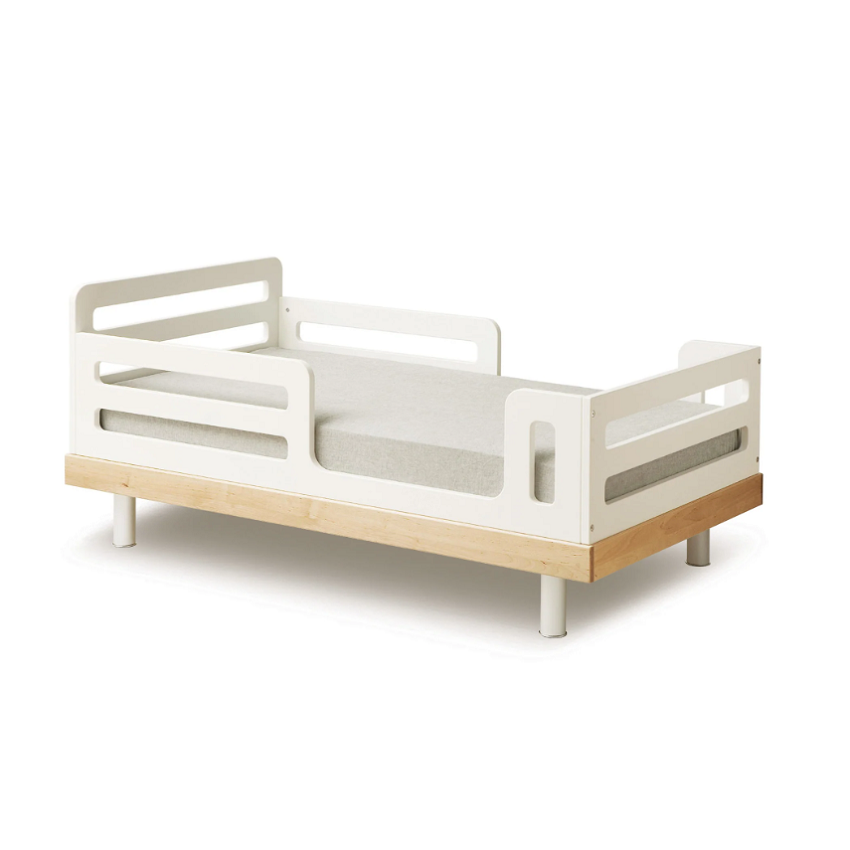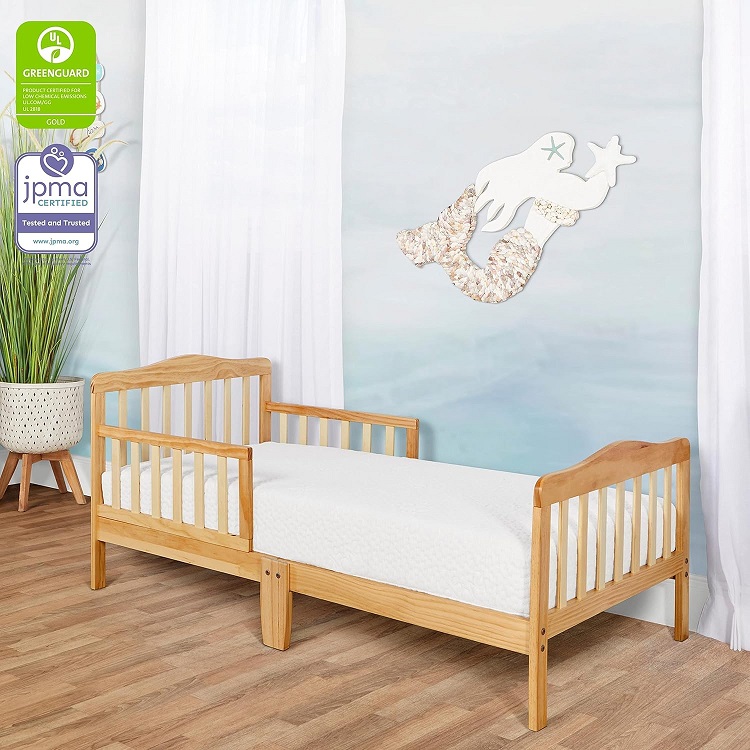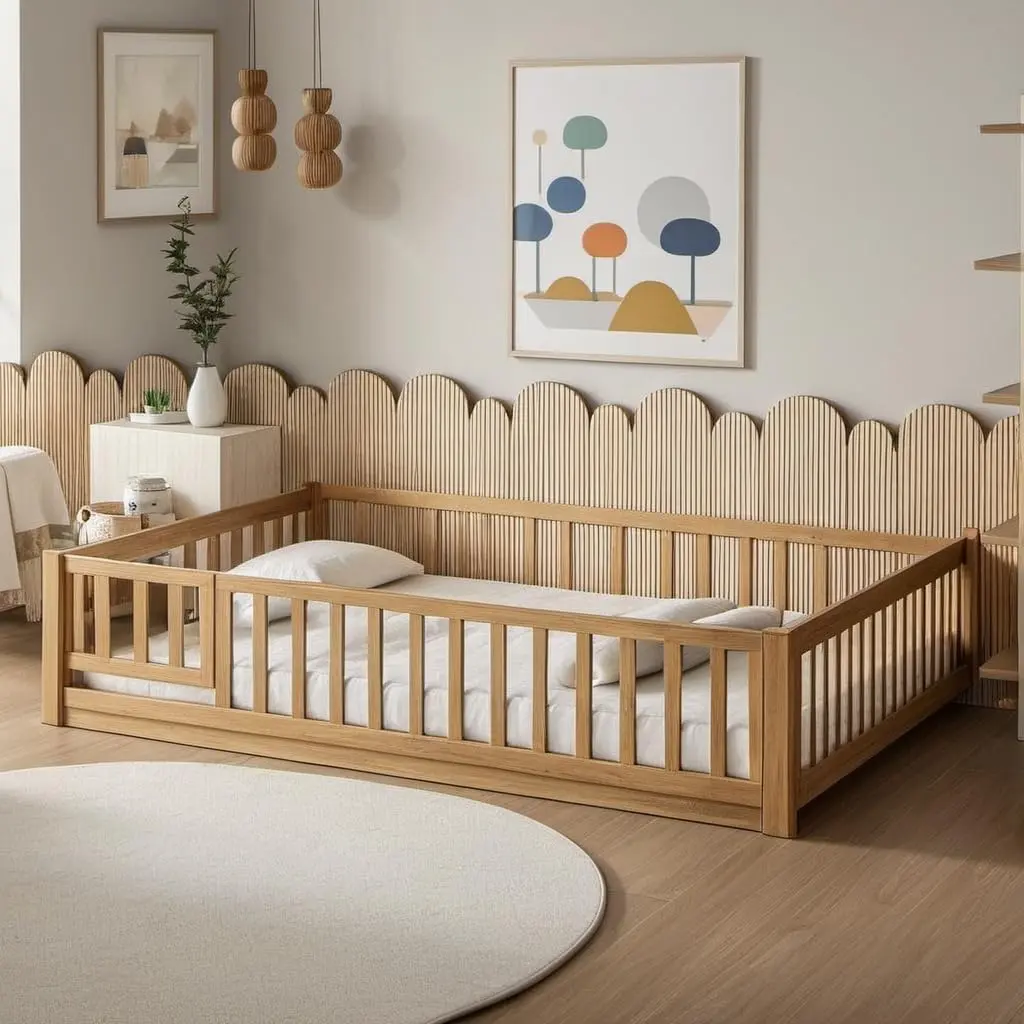Making the Move: Smoothly Transitioning Your Toddler From Crib to Toddler Bed
Moving your little one from a crib to a toddler bed is a significant milestone, both for them and for you! This article is your friendly guide to understanding when and how to make this transition as smooth and stress-free as possible. We'll explore the signs that your toddler is ready, tips to prepare them and yourself, and strategies to ensure they stay in bed and enjoy their new bed. Read on to learn how to navigate this exciting transition with confidence and create a positive experience for everyone involved.
1. Is it Time? Recognizing the Signs Your Toddler is Ready to Transition from a Crib?
Knowing when to transition your toddler from a crib to a toddler bed can feel like a guessing game. Many parents wonder, "Is my child is ready?" or "How do I know they are ready for a toddler bed?". The truth is, there's no magic age, but rather a combination of developmental and behavioral signs your child is ready. It's less about age and more about observing your little one and understanding their cues. Forcing a bed transition before they are ready can lead to unnecessary struggles and sleep disruptions.
One of the first things to consider is your toddler's physical development. Are they becoming too big for their crib? While cribs are designed to be safe and secure, eventually, your growing toddler might start to feel cramped. Look at their length in the crib. Are their feet touching the bottom of the crib frequently? While this isn't the sole indicator, it’s a factor. More importantly, observe their behavior and listen to their verbal cues. Are they expressing interest in a "big kid bed"? Have they started talking about wanting to be like older siblings or friends who sleep in beds? These verbal cues can be valuable insights into their readiness for a bed transition.

2. What Age is the Right Age for a Toddler Bed Transition? Debunking Common Myths.
While there's no single "right" age, the American Academy of Pediatrics suggests that most children are ready for a toddler bed sometime between 18 months and 3 years old. However, this is just a guideline. Some toddlers might be ready closer to 18 months, while others might be perfectly happy and safely in a crib until closer to 3 or even 3.5 years. It truly depends on the individual child is ready. Don't feel pressured by what other parents are doing or by age charts alone.
A common myth is that you must move your toddler to a bed by a certain age. This simply isn't true. If your toddler is content in their crib, sleeping well, and not showing any signs your toddler is trying to escape, there's often no rush to make the change. Another myth is that a toddler bed is essential. While toddler beds come in cute designs and smaller sizes, they aren't always necessary. You can transition directly to a twin bed or even a full-sized bed, depending on your space and budget. The most important thing is to focus on your toddler's individual readiness and needs, not arbitrary age milestones.
3. Climbing Out of the Crib: The Number One Sign It's Time for a Bed Transition.
If your toddler is climbing out of the crib, this is often the most compelling and urgent sign it's time to transition. Once your little one starts scaling the side of the crib, it becomes a safety hazard. They could fall and injure themselves trying to get out. This is a clear indication that the crib is no longer a safe sleeping environment and it's definitely time to transition. Ignoring this sign and trying to keep them in the crib for longer could lead to accidents.
When climbing out of the crib becomes a regular occurrence, it's not just about safety; it's also a sign of your toddler's growing independence and mobility. They are exploring their boundaries and learning new physical skills. Trying to prevent them from climbing out of the crib at this stage can be frustrating for both of you. Instead of viewing it as a problem, see it as a signal that they are ready to move to an open bed. While some parents might try lowering the crib mattress to its lowest setting, this is often only a temporary fix. Once a toddler is determined to climb, they will usually find a way. Therefore, climbing out of the crib should be your primary cue to initiate the crib to bed transition.
4. Beyond Climbing: Other Key Signs Your Child is Ready for a Toddler Bed.
While climbing out of the crib is the most urgent sign, there are other indicators that suggest your toddler might be ready for a toddler bed. These signs are often more subtle but equally important to consider. One sign is verbalizing a desire for a big kid bed. If your toddler starts asking for a bed like their older siblings or friends, it shows they are thinking about this transition and might be excited about it. Listen to these verbal cues.
Another sign is increased independence and a desire for more freedom of movement. Toddlers at this age are naturally curious and want to explore their environment. A crib, while safe, can feel confining to a toddler who is becoming more mobile and independent. If you notice your toddler becoming restless in their crib, especially during naps or bedtime, it could be a sign they crave more space and freedom. Furthermore, if your toddler is nearing the upper weight or height limit of their crib, even if they aren't climbing, it might be time to transition for comfort and space reasons. Consider these factors in addition to climbing to get a holistic view of your toddler's readiness.

5. Toddler Bed vs. Twin Bed vs. Convertible Crib: Choosing the Right Bed for Your Kid.
When you've decided it's time to transition, you'll face the question of what type of kid bed to choose. The most common options are toddler beds, twin beds, and convertible cribs that transform crib into a toddler bed. Each has its pros and cons, and the best choice depends on your space, budget, and your toddler's needs.
Toddler beds are smaller and lower to the ground than twin beds, often designed to resemble miniature adult beds. They are a popular choice because they feel like a natural stepping stone from a crib. They often use the crib mattress, which is a cost-saving factor. However, toddler beds are typically only suitable for a few years, and your child will eventually outgrow it, requiring another bed transition later on. Twin beds, on the other hand, are standard single beds that your child can use from toddler years through adolescence and even adulthood. While they take up more space initially, they are a more long-term and cost-effective solution in the long run as you won't need to buy another bed soon. A convertible crib offers the option to transform your existing crib into a toddler bed by removing one side of the crib. This can be a budget-friendly option if you already own a convertible crib. However, the "toddler bed" mode of a convertible crib is often still quite low to the ground and might not feel significantly different from the crib itself for some toddlers. Ultimately, consider your long-term needs and space when making this decision. For many families, skipping the toddler bed and going straight to a twin bed is a practical and efficient choice.
6. Making the Transition Easier: Practical Tips for a Smooth Crib to Toddler Bed Transition.
The key to a smooth transition is preparation and making the experience positive for your toddler. Start by involving your little one in the process. Let your child help choose their new bed, if possible, or at least involve them in setting up the bed. This can create excitement and ownership over their big kid bed. Talk about the transition in positive terms. Emphasize that getting a toddler bed is a sign of growing up and becoming a "big kid."
Maintain as much consistency as possible with their existing sleep environment and bedtime routine. Use the same bedding from the crib initially, if possible, to provide familiar smells and textures. Place the new bed in a similar location in the room to where the crib was, if feasible. Keep the bedtime routine consistent. This familiarity will help your toddler feel more secure in their new bed. Consider introducing the toddler bed gradually. For example, start with naps in the toddler bed and continue using the crib for nighttime sleep initially. Or, you could set up the toddler bed and let them play in it during the day to get accustomed to it before expecting them to sleep better in it at night. Patience and a positive attitude are crucial for a smooth transition.

7. Creating a Bedtime Routine for a Toddler Bed: Ensuring Toddler Sleep Success.
A consistent bedtime routine is crucial for toddler sleep success, especially during a bed transition. A predictable routine signals to your toddler that it's time to wind down and prepare for sleep. This routine should be calming and relaxing, helping them feel secure and ready for bed at bedtime. Start the routine at the same time each night.
A typical bedtime routine might include a warm bath, putting on pajamas, brushing teeth, reading a book, and singing a lullaby. Keep the activities calm and avoid stimulating play or screen time close to bedtime. Once you put your toddler in their new bed, say goodnight and leave the room. It's important to be consistent with this routine every night, even on weekends, to establish healthy sleep habits. Using a sleep sack can also be helpful during the transition. While it doesn't prevent them from getting out of bed, it can provide a sense of security and warmth, similar to the feeling of being in a crib. A consistent and calming bedtime routine will greatly contribute to your toddler's comfort and success in their toddler bed.
8. What to Do When Your Toddler Keeps Getting Out of Bed? Strategies to Help Them Stay in Their Bed.
It's very common for toddlers to pop out of bed repeatedly after being put your toddler down in their new bed, especially in the initial transition phase. This is often a test of boundaries and a way to seek attention. The key is to respond calmly and consistently, with the goal to teach your toddler to stay in their bed. When your toddler gets get out of bed, calmly and quietly return them to their bed each time, without engaging in lengthy conversations or giving in to demands for extra cuddles or playtime.
Be firm but gentle. Simply say, "It's bedtime, you need to stay in bed," and guide them back to bed. Repeat this process as many times as necessary. It can be tiring initially, but consistency is crucial. Avoid getting frustrated or angry, as this can make bedtime a negative experience. Check that their room environment is conducive to sleep. Is it dark enough? Is the room temperature comfortable? Are there any distracting noises or lights? A toddler bed with rails can also be helpful, at least initially, to provide a physical boundary and a sense of security. Over time, with consistent and calm responses, your toddler will learn that bedtime means staying in bed all night long.
9. Handling Setbacks: What if the Bed Transition Doesn't Go Smoothly?
Even with the best preparation, the bed transition may not always be a smooth transition. Some toddlers adapt quickly, while others may experience toddler struggles and resist the new bed. It's important to be prepared for potential setbacks and have strategies to handle them. If your toddler is consistently upset or anxious about the new bed, consider going back to the crib, at least temporarily. There's no shame in going back to the crib if the bed isn’t working initially.
A temporary retreat to the crib doesn't mean failure; it simply means your toddler might need a little more time or a different approach. After a week or two back in the crib, you can try the transition again, perhaps with a slightly different strategy or more gradual approach. If a new baby is arriving soon, and you suspect the transition stress is linked to that, focus on making the crib a positive space again and postpone the bed transition until after the new baby has settled in. Remember, every toddler is different, and some transitions just take longer than others. Patience, flexibility, and a positive attitude are key to navigating any bumps in the road during the crib to toddler bed transition.
10. Preparing for a New Baby? Timing Your Crib to Toddler Bed Transition Strategically.
If you are expecting a new baby, the timing of the crib to toddler bed transition becomes even more important. Ideally, you want to make the transition well in advance of the baby's arrival, or postpone it until a few months after the baby is born. Transitioning too close to the arrival of a new baby can create feelings of displacement and jealousy in your toddler. They might associate the new bed with being "replaced" by the baby in the crib, leading to negative feelings about the bed and the transition itself.
If possible, aim to transition your toddler to a bed at least 2-3 months before the baby is due. This gives them time to adjust to their new bed and feel settled in their new sleeping arrangement before the arrival of the new baby. If you are already close to your due date, or the toddler bed transition is proving more challenging than anticipated, it might be better to wait until the new baby is around 2-3 months old. By this time, the initial upheaval of a newborn's arrival has usually subsided, and your toddler will be less likely to associate the bed transition with the new baby. Careful timing can significantly contribute to a smoother transition for your toddler and a more harmonious family dynamic.
Key Takeaways for a Successful Crib to Toddler Bed Transition:
- Look for the signs: Don't rush the transition based on age alone. Watch for signs like climbing out of the crib, verbalizing interest in a big kid bed, and increased independence.
- Safety first: Climbing out of the crib is the number one safety reason to transition.
- Make it positive: Involve your toddler in the process, talk about the transition excitedly, and celebrate this milestone.
- Consistency is key: Maintain a consistent bedtime routine and respond consistently when your toddler pop out of bed.
- Be patient and flexible: Setbacks are normal. Be prepared to adjust your approach and offer reassurance and support.
- Time it right: If a new baby is on the way, plan the transition well in advance or postpone it until after the baby is a few months old.
Transitioning your toddler from a crib to a toddler bed is a significant step, but with understanding, patience, and the right strategies, you can make this a positive and successful experience for your little one and your whole family. And when you're ready to furnish your toddler's new "big kid" room, remember to check out our wide selection of high-quality solid wood kids furniture, including stylish and safe kids beds, functional storage solutions, and adorable kids wardrobes to create a space they'll love for years to come! We are a leading Kids Furniture Manufacturer and are here to support you in creating the perfect environment for your growing child.
Post time: Jan-24-2025





